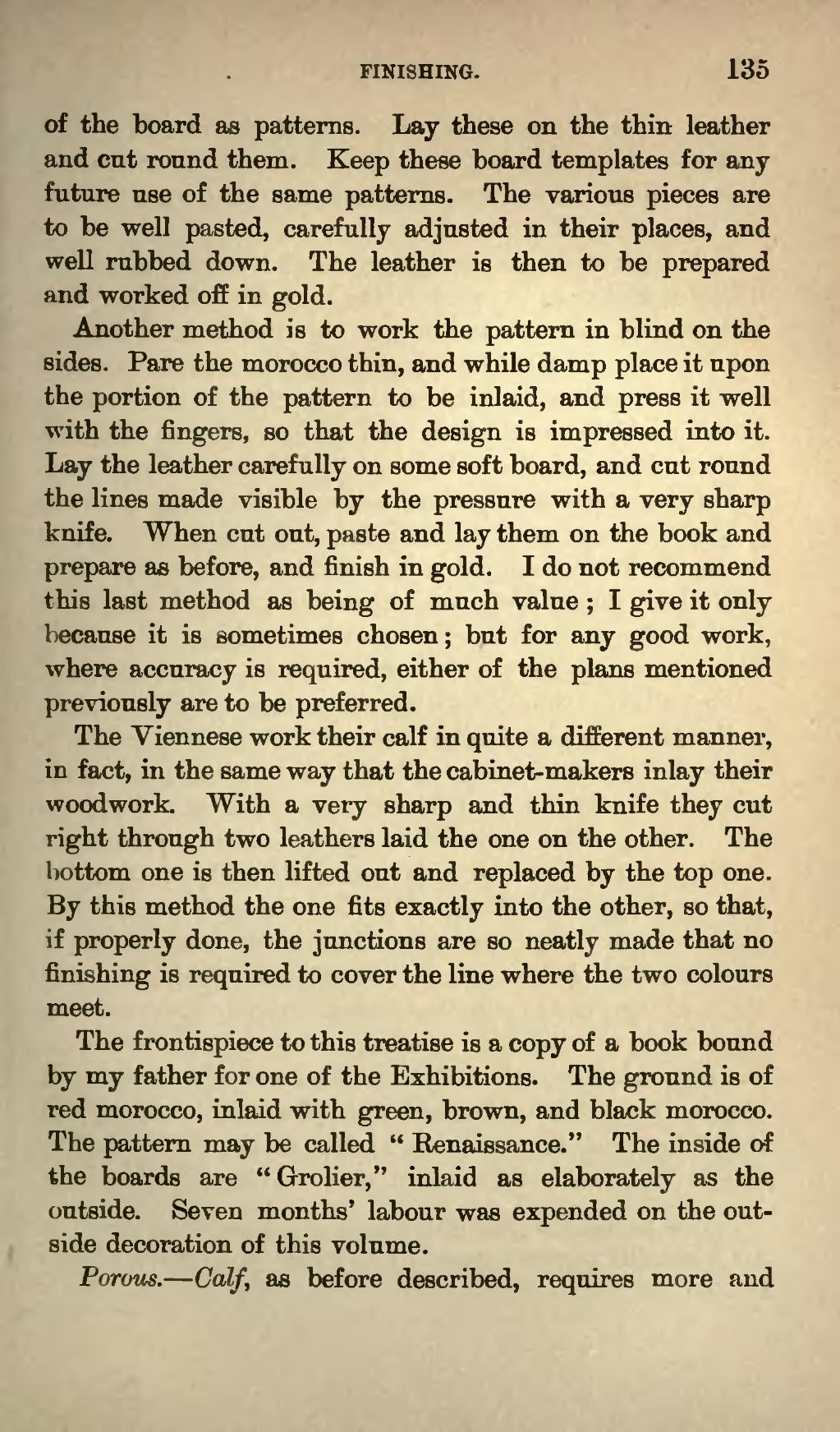of the board as patterns. Lay these on the thin leather and cut round them. Keep these board templates for any future use of the same patterns. The various pieces are to be well pasted, carefully adjusted in their places, and well rubbed down. The leather is then to be prepared and worked off in gold.
Another method is to work the pattern in blind on the sides. Pare the morocco thin, and while damp place it upon the portion of the pattern to be inlaid, and press it well with the fingers, so that the design is impressed into it. Lay the leather carefully on some soft board, and cut round the lines made visible by the pressure with a very sharp knife. When cut out, paste and lay them on the book and prepare as before, and finish in gold. I do not recommend this last method as being of much value; I give it only because it is sometimes chosen; but for any good work, where accuracy is required, either of the plans mentioned previously are to be preferred.
The Viennese work their calf in quite a different manner, in fact, in the same way that the cabinet-makers inlay their woodwork. With a very sharp and thin knife they cut right through two leathers laid the one on the other. The bottom one is then lifted out and replaced by the top one. By this method the one fits exactly into the other, so that, if properly done, the junctions are so neatly made that no finishing is required to cover the line where the two colours meet.
The frontispiece to this treatise is a copy of a book bound by my father for one of the Exhibitions. The ground is of red morocco, inlaid with green, brown, and black morocco. The pattern may be called "Renaissance." The inside of the boards are "Grolier," inlaid as elaborately as the outside. Seven months' labour was expended on the outside decoration of this volume.
Porous.—Calf, as before described, requires more and
